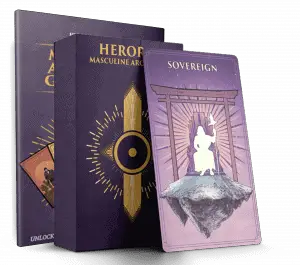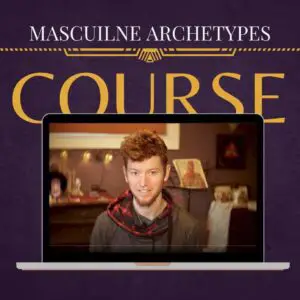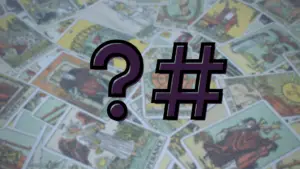One of the most transformational experiences of your life is facing your Shadow. This is even more so important to anyone that does Witchcraft or other spiritual practices.
Shadow work allows you to change yourself on a deep level, gaining access to your full potential. In this article, we will be looking at what Shadow Work is and how you can use it in your practice.
What is Shadow Work in Witchcraft?
Within the context of Witchcraft, Shadow Work explores the suppressed aspects of the subconscious. Rituals and practices can help you uncover hidden feelings, emotions, and memories. Witchcraft can be a powerful tool to help you integrate your Shadow.
Shadow work is not exclusive to Wicca, Witchcraft, and spirituality. It comes out of Psychology and the work of Carl Jung.
Shadow Work is a technique you can use to uncover the repressed aspects of yourself.
New to Shadow Work? Check out the Ultimate Beginners Guide to Shadow Work.
It’s about uncovering the deeper parts of your identity and can help you unravel negative behaviors, limiting beliefs, and help balance your intuition.
Though Shadow Work isn’t exclusive to Witchcraft, it pairs well with the techniques of ritual. Witchcraft uses ritual as metaphor and allegoric action. What is amazing is the subconscious works with symbolism. So when you burn an old love letter, you are sending a message to your deep subconscious to let it go.
That is why Witchcraft and Shadow Work pair so well.
Witchcraft uses rituals to speak to the subconscious and uncover the Shadow Self.
What is the Shadow Self?
The Shadow Self is all of the repressed behaviors and thoughts of your identity. The Shadow Self usually comes from trauma, guilt, and a need to protect. These aspects never go away, and the farther you push them, the more volatile they become.
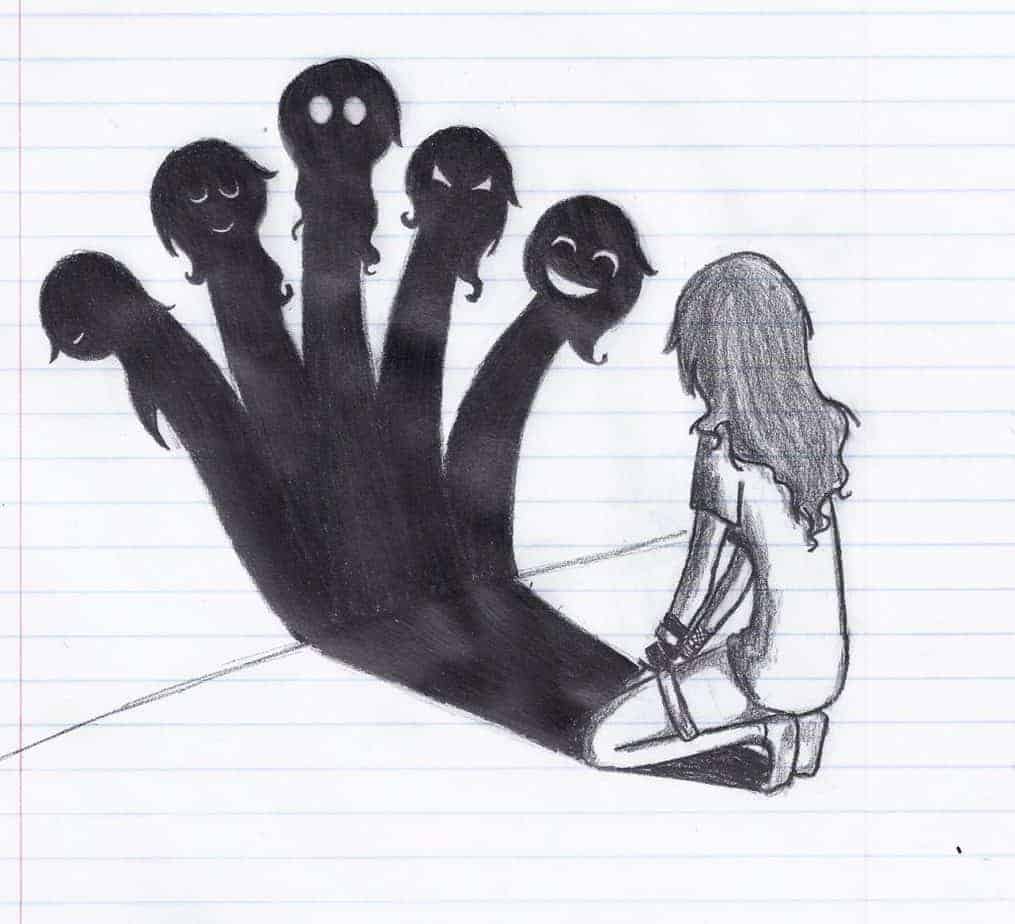
One of the most important steps to Shadow Work is discovering your Shadow. It’s about recognizing the things you are ashamed of. Perhaps you see this part of yourself as uncivilized, unworthy, or wrong.
If you push these parts of yourself away, one day, they will snap back. It can lead to depression, addiction, anger, and confusion.
So it’s vital to integrate your Shadow. It will never go away, but bringing it closer to yourself with conscious awareness will begin to balance these negative patterns within your Psyche.
(Read more about the Shadow and Jungian Psychology here.)
How it works: Magical Identity and Shadow Work
So how does all this work? And why?
A lot of people jump into Witchcraft looking for spells to give them things. Like a love spell to find a partner or money spells to bring abundance.
Many practitioners forget that the identity can get in the way of their magic from working.
A good example is when I was in my 20’s I was doing a lot of money spellwork—hoping to find a way to build abundance in my life. The problem was when I got money I felt strange about it. I didn’t feel like I deserved it, and my identity still saw me as a poor artist.
Eventually, the money would disappear, or I’d spend it on foolish things.
The problem wasn’t my spellwork or willpower; it was what would happen once I got what I asked. My identity was the problem.
This is what makes Shadow Work so crucial as a practitioner.
Taylor Ellwood wrote in his book Magical Identity:
“Identity is central to the practice of magic because it is through your identity that you define your life…. Without identity, there would be no change in conformity with will, because there would be no will, nor a means to change anything. Any change enacted on the world must first occur in your identity if it is to be successful change. If your identity doesn’t change, whatever results you may have gotten will slip away because you will reject it in your identity. Whatever your identity does not agree with will not become part of your reality. “
Shadow work helps you uncover the fears that you have attached to yourself when you say “I.”
Our identity is just stories we tell ourselves. Shadow Work helps us see the stories better, and Witchcraft helps us rewrite these stories.
Shadow Work Rituals: Practices to integrate the Shadow
Ritual is a great way to explore the subconscious aspects of the Shadow and bring them to light (consciousness). After all, ritual is symbolism, and symbolism is the language of the subconscious.
Over the years, I have used many different rituals with myself and others to explore the Shadow Self. Here are a few that I have found particularly powerful.
1. Invoking the Demon Within Ritual
The saying “face your demons” talks about the dark aspects of your Psyche —otherwise known as the Shadow.
There has been a long magical tradition of exploring the demonic aspects within oneself. We see this often in Buddism rituals and Yogic traditions, such as “feeding the demon.”
NOTE: This is not actually invoking a demon; it uses the word demon to describe the shadow self.
Here is my version of Invoking the Demon Within.
Step 1: Create a safe space. This can look like casting a circle, lighting candles, or anything else you need to make a safe container. I prefer the LBRP.
Step 2: Finding your Demon. Once you are in a grounded space, allow yourself to explore your emotional body. Try to think of anything that gets “stuck.” Maybe you’re mad at someone, or maybe your sexual energy feels all knotted up. Whatever it is, let that feeling manifest in your body.
Now intensify the sensations.
Step 3: Personify the Demon. Now that you have a sense of what the demon (Shadow) is let yourself increase the sensation. Try moving with it. Imagine what color it would be inside of you. What texture or shape?
Let your Shadow fully manifest. Feel its anger, it’s sadness, or whatever else comes up.
Step 4: Converse with the Demon. Now ask the Demon (Shadow): What do you want? What do you need right now? When you get it, how will that make you feel?
This is the moment that your subconscious has the space to speak to your conscious mind. Try to move past the first emotions of anger or sadness. Keep asking why as you go deeper and deeper into what your Shadow wants from you.
Step 5: Give the Demon Love. If you can give the shadow self what it needs, offer it up. If not, try and offer it love and acceptance. Let yourself feel compassion for this part of yourself.
When you feel complete, ask the Demon (Shadow) to leave in peace. Visualize it dissipating in your mind.
Step 6: Integration. Take a moment to feel grounded. Notice your body on the earth or make small movements to come back to your body.
If you have it, take out a pen and paper and write about your experience.
2. Releasing the Shadow – Candle Ritual
Working with the Shadow is about recognizing the darker aspects of ourselves and giving them time and space to heal. The longer we ignore the Shadow, the stronger it becomes.
This ritual is a way of recognizing it and giving it a way to relax.
It’s like a release valve.
For this ritual, you will need the following:
- Black candle
- Sharp object (pin or pen)
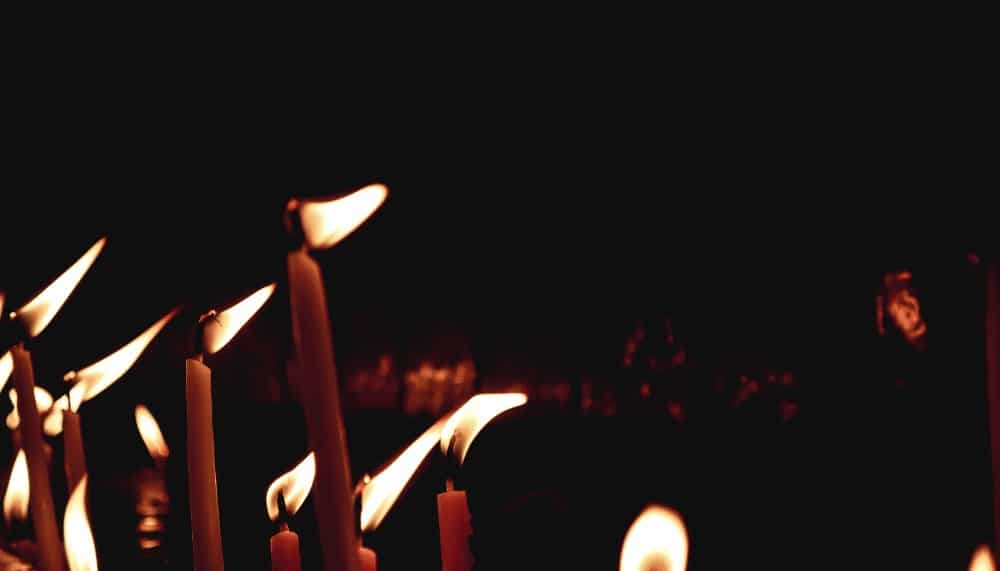
Step 1: Create a safe space. As with any ritual, create a safe space to help you focus. YOu can do this by lighting incense, drawing a circle, playing relaxing music, and turning off any other distractions.
Step 2: Draw on the Candle. Take out the black candle. While holding it, try to feel into any negative emotions or processes you have been going through lately. Maybe you have anxiety about something, are upset, or keep running into an old trigger.
Try to think of a few words that represent these feels and scratch it on the candle. You can do this with a pen or pin. It doesn’t have to be too legible; it’s more about the intent.
Step 3: Light the Candle. Now light the candle. Take a moment to meditate on these shadow aspects that are coming up. Ask yourself, where are these negative emotions and patterns come from?
Respect these feelings and don’t need to feel you have to fix them. Just be with it.
Step 4: Let it be. Try and let the candle burn all the way out (best to use chime candles or birthday candles). If the candle does not burn all the way, bury it. When it is done (or you blow it out), thank the Shadow for its lessons.
3. Inviting an Aspect of the Shadow to Speak
This next exercise is very similar to Invoking the Demon Within, but it has a different approach.
This activity is a guided meditation that utilizes Parts work via Internal Family Systems. It is a technique that allows you to connect to an aspect of yourself that has been hurt, traumatized, or repressed (your Shadow).
This is a very powerful meditation and technique.
4. Journaling – Shadow Writing Prompts
Journaling can also be a powerful way to explore the Shadow Self.
Though journaling isn’t inherently a ritual, it can be used during a ritual.
Sit down with a journal and use these three prompts to get started. Try and let yourself go when writing. Don’t think about it too hard, and let yourself write the first thing that comes to mind. Getting into this stream of consciousness will allow the shadow space to come forward.
Writing Prompt #1:
WHAT ARE THE PARTS OF YOURSELF YOU REALLY DON’T WANT TO TALK ABOUT? THE THINGS YOU HAVEN’T TOLD ANYONE ELSE? WRITE THOSE DOWN.
Writing Prompt #2:
NOW, WRITE ABOUT THE QUALITIES BEHIND THESE SHADOW ASPECTS. (FEAR, GUILT, SHAME, LOSS)
Writing Prompt #3:
WHAT WOULD YOU SAY TO A DEAR FRIEND OR LOVED ONE EXPERIENCING THESE HARDSHIPS/EMOTIONS? COULD YOU LOVE THEM AND ACCEPT THEM?
You can read more about this exercise with this blog post.
Dreamwork and the Shadow
Dreamwork is often used as a way of bringing the Shadow Self into the conscious mind. The symbols you see during dreams can be interpreted to uncover a deeper understanding of your Shadow.
Carl Jung not only founded the concept of Shadow Work, but he also popularized utilized Dreamwork in therapy sessions.
“Dreams are impartial, spontaneous products of the unconscious psyche, outside the control of the will. They are pure nature; they show us the unvarnished, natural truth and are therefore fitted, as nothing else is, to give us back an attitude that accords with our basic human nature when our consciousness has strayed too far from its foundations and run into an impasse.” — C.G. Jung (CW 10 317)
Dreamwork is also often used in witchcraft and spiritual practices. The belief is that in your dreams, you are closer to the source of the spirit. Helping give you a deeper understanding of the spiritual realms.
Dreamwork, Witchcraft, and shadow work can all work hand in hand. Here is a great technique:
- To start doing Dreamwork, have a journal by your bed.
- When you awake, let yourself stay still and try and remember your dreams
- When ready, get your journal and start writing.
- When you are done writing, try to notice if there is any symbolism of your Shadow.
- Take a moment to contemplate/meditate on how your Shadow is speaking through your dreams.
If you are having trouble remembering your dreams, try bringing a full glass of water to bed. As you lay down, drink ½ of it saying “I will remember my dreams this evening.”
When you wake up, drink the other ½ and say “I remember my dreams.”
This creates a bookend in the subconscious that helps you remember your dreams. This technique is incredibly helpful for me when I notice I haven’t remembered my dreams.
Alchemy and Shadow Work
Many people have seen the art of Alchemy as an internal art, more than making physical gold.
In this sense, Alchemy is about transforming and transmuting the Shadow into wholeness.
There are seven stages to Alchemy, and they can be viewed as the seven steps for integrating the Shadow.
- Calcination – The process of recognizing the Shadow and breaking down the parts of ourselves that are in the way of our own spiritual growth.
- Dissolution – Begining to recognize the patterns that don’t serve you and the hurt that they cause. Making you question who you are and the purpose of it all.
- Separation – Feeling the need for change and becoming aware of what we have to let go of.
- Conjunction – All of your unconscious thoughts and feelings begin to bubble up to the surface and into the light of consciousness.
- Fermentation – Rebirth of the soul. This can be seen as a spiritual death that leads to something new.
- Distillation – Finding inner peace with this new “self” and integrating the Shadow.
- Coagulation – You have come to “fullness,” allowing all of the aspects of yourself without fear or judgment. This can be seen as enlightenment.
Alchemy can be a great spiritual path for understanding one’s Shadow and how to integrate it. You can read more about Inner Alchemy at The Collector.
Astrology and Shadow Work
Astrology views the stars and planetary spheres as representations of the soul. Each planet represents an aspect of who we are and the tasks we can undergo for growth. In this way, some planets can be seen to represent Shadow Aspects of yourself.
The two planets that represent the Shadow Aspects of our Psyche are Saturn and Mars.
Saturn is the domain of great upheaval and brings you face to face with your greatest fears. It can symbolize discomfort, negativity, depression, and detachment.
So yeah, that sounds like the realm of the Shadow.
If you want to connect with the Shadow Self, you can utilize Saturn as a guide. The planet, or god form, can be an ally to help point out the aspects of your Shadow.
Mars is known as the minor Malefic planet (while Saturn is the Major Malefic planet) and can represent the suppressed aspects of anger, self-harm, violence, and impulsiveness.
Mars can be an ally when exploring how the dynamics of power and control interplay with your Shadow.
Each of the Planets in astrology can be seen to have a light and shadow side, or a blessing and curse. If you are interested in learning more, check out this article on Shadow Themes in Astrology.
Tarot and Shadow Work
Tarot can also be a powerful tool for exploring the Shadow.
For myself and many people, Tarot is one of the best tools when getting in touch with the subconscious. The images and symbols of the cards speak to the subconscious mind and can be used to bring understanding around the Shadow Self.
Tarot also has a dream-like quality to it. It allows the mind to wander and make new connections and finding insight along the way.
You can use the Tarot with the intent of understanding the Shadow Self.
Either by asking specific questions about the Shadow when you do a reading or doing a spread for uncovering your shadow aspects.
Here is a spread you can do to explore your Shadow:
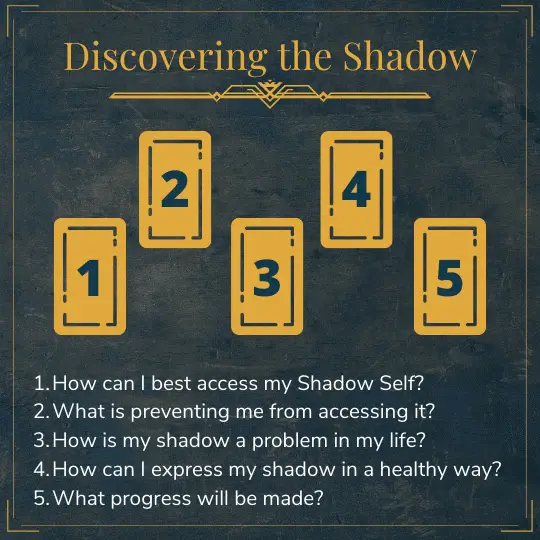
There are also three cards that many see to represent the darker aspects of the self/shadow. The cards also represent positive aspects, but they also point to an aspect of the Shadow.
- The Devil — The Devil is associated with temptation, indulgence, and what our society sees as “uncivilized.” The problem doesn’t arise from these shadow aspects, but the problem arises when you suppress them.
- The Moon — The moon represents the wild and untamed inner world. This aspect of your Shadow is the emotionally chaotic, daring, and reactive aspect of the Psyche.
- Strength — The lion of the Strength card can represent a grounded determination, but it can also represent the fierce nature that is tied with your strength. This card is useful for exploring what you push away out of fear and courageously embrace.
In Conclusion:
Shadow Work is incredibly powerful and rewarding. Witchcraft and other spiritual practices are a great way to explore your identity and connection with the Shadow Self.
There is also a cautionary tale with Shadow work.
If you do not understand your Shadow, it will constantly bleed into your spellwork and cause havoc. To be a good wizard or witch, you must face this part of yourself. Otherwise, you are doomed to fail.
It’s also important not to get lost in Shadow Work. Here is a great quote by John J. Coughlin (page 22)
“But it is important to remember that focusing only on the darker side is just as dangerous as focusing on the lighter side. Balance is important, and even though some may relate to one aspect more than the other, we must always remain open to the other aspects. Life consists of the interplay of these opposites, which naturally complement each other. To discard one aspect is to sacrifice our wholeness and limit our potential.” – John J. Coughlin
Practicing the rituals in this article will give you a deeper understanding of your Psyche and will help your craft blossom to its fullest potential.
Books and Resources:
Ellwood, Taylor (2018). Magical Identity: The Practical Magic of Space, Time, Neuroscience and Identity
John J. Coughlin (2015) Out of the Shadows: An Exploration of Dark Paganism and Magick
Jung, C.J. (1959) Good and evil in analytical philosophy.
Jung, C.J. (1938). Psychology and religion. Binghamton, NY: The Vail-Ballou Press, Inc.
